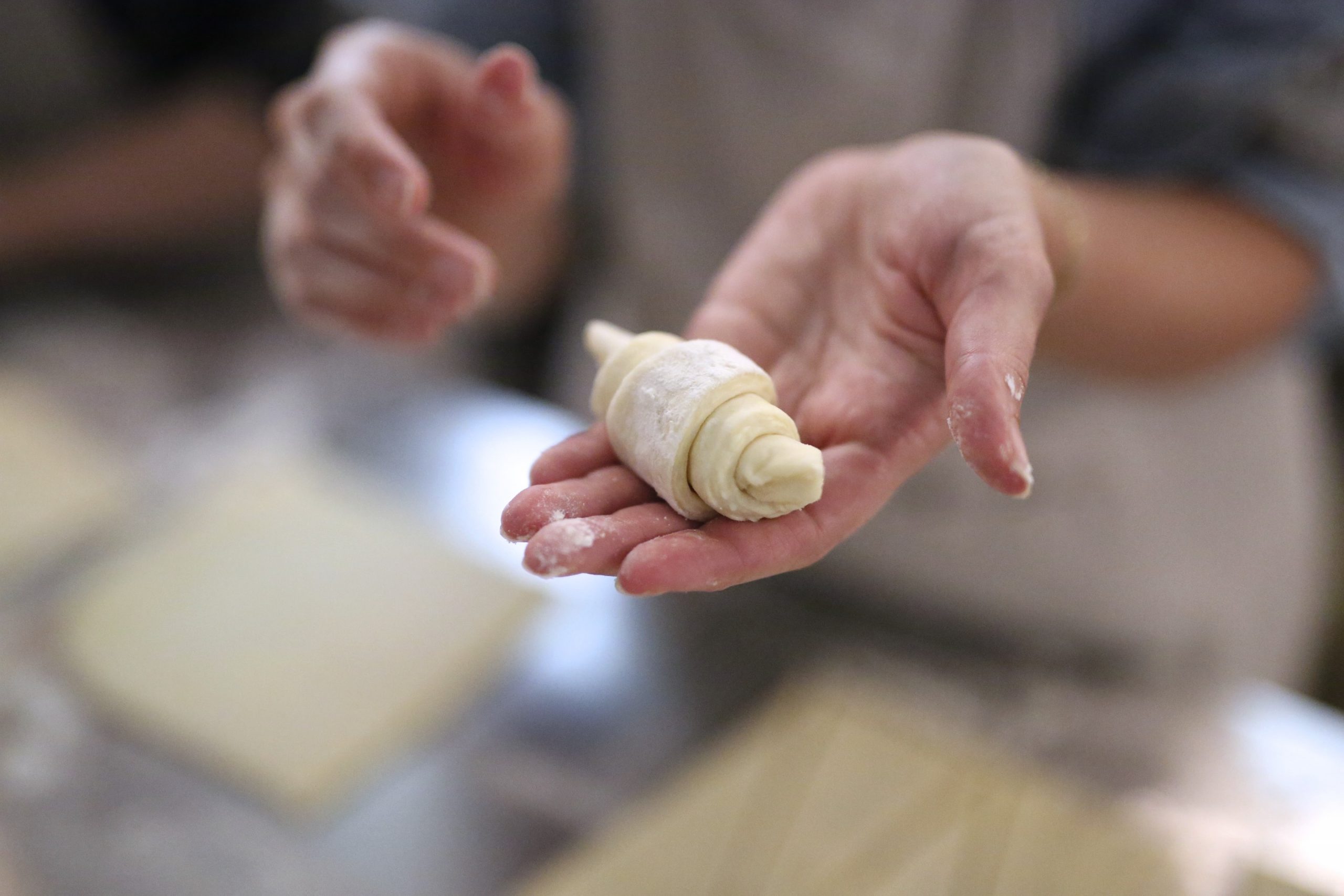

One of the highlights of my week in Paris was the croissant class I took at Le Foodist. This was my second class at Fred and Amanda’s English-speaking cooking school. I was so excited to learn the art of making croissants, especially since I’m already an expert at the art of eating them.
Billy arrived in Paris that morning and enthusiastically joined me for the class, despite his jet lag. I think he secretly hoped his attendance would somehow inspire me to go home and bake homemade croissants for him every morning, a logic I couldn’t really follow seeing as he, too, was in the class. God bless him.
Rest assured he’s still waiting.
The class was lovely. Amanda, who has the patience of a saint, did an amazing job taking us through the process.
Do you know how long it takes to make croissants? Twelve hours. That’s right, folks. First the dough has to rest so that the yeast can do its work. Then you have to roll it out and fold it into thirds. It has to chill before you can repeat the process again (and again, and again). I’m leaving out a lot of steps in the name of holding your attention, but suffice it to say that the road to a flaky, buttery croissant is long.
Because the class was only three hours, Amanda shuffled around the process so that we could experience each step; we worked with the dough made by the previous class while also making the dough for her next group of students.
Do you know how long it takes to actually bake croissants? Twelve minutes. The croissants are brushed with an egg wash (twice) before being popped into a hot oven.
Do you know how long it takes to eat a croissant? Twelve seconds! All of that work for mere moments of pleasure. It begs the question, why would anyone bother making them in the first place? After all, they’re full of butter and they take forever to make, and let’s be real, the only thing people fear more than butter is waiting.
I’m not over-exaggerating when I say that these were some of the best croissants I’ve ever eaten. In no way am I claiming to have out-baked the legendary pastry chefs of France, it’s just that I made them—I rolled my patience, devotion, and faith right into the dough. Each bite of buttery ecstasy was the result of my commitment and connection to the process, and I’ll tell you what, it tasted damn good.
Making croissants is all about the process. It’s a lot of blood, sweat and tears for twelve seconds of perfection, but the reward is so much richer than those twelve fleeting seconds of pleasure. Absorbed in the process of making croissants, I cultivated an understanding of the end result; I could literally taste my appreciation in every bite.
Patanjali explains the process as a balance of abhyasa (practice) and vairagya (non-attachment). Abhyasa, or practice, is our devoted commitment to a chosen purpose. In the context of the Yoga Sutras, the purpose in question is the redirection of the mind, but I expand this idea in my everyday life to include the intention of absorption with whatever medium I’m exploring in the moment, be it asana, cooking, or relationship. There are three qualifications of practice: that it be attended to for an indefinite period of time (certainly a lot longer than twelve hours), that we practice continuously without break, and that we approach our practice with earnest, heartfelt devotion. The art of making croissants requires all three—as it turns out, patience, devotion and faith are the main ingredients in croissants, right after butter.
Non-attachment is knowing that what you’re looking for can’t be found in the end result. The fruits of your efforts are just that—the fruits of the effort that went into creating the fruit, or in this case, croissants. Commitment to the process helps us understand that the process is the goal.
This class was delicious in every way. I just might try to make croissants at home; I know one person who would be very happy if I did. I know that it would definitely be worth twelve hours of waiting around just to have the experience of doing it myself, and, of course, to enjoy those twelve seconds of buttery heaven. Besides, the best ingredients in life are waiting and butter.

Yummy, when can i come and try them out? 🙂
Bisous
[…] to Vrttiville. Patanjali’s immediate suggestion for stilling the vrttis of the mind is abhyasa (practice) and vairagya (non-attachment), but I find I often turn to the practice of pratipaksha bhavanam as an intermediary step. Maybe […]